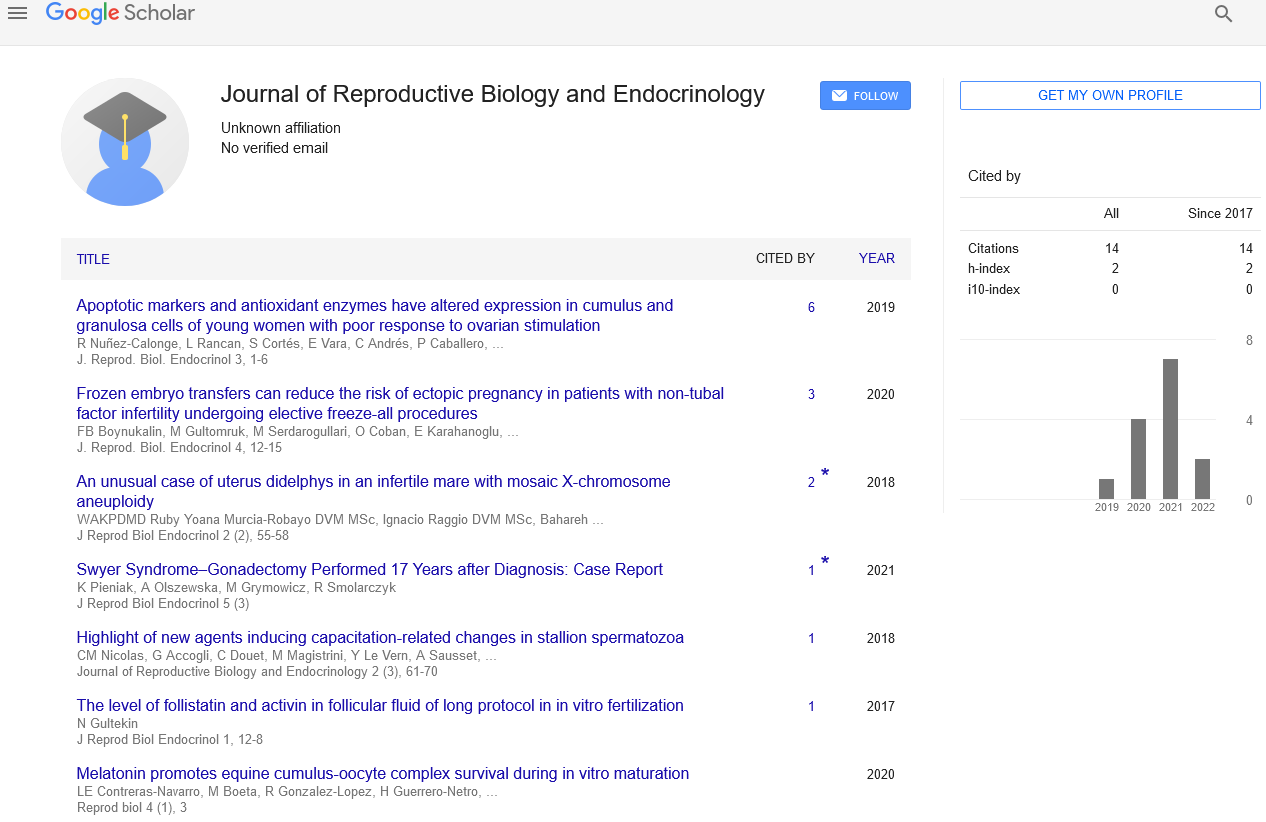Uterine fibroids and pregnancy
Received: 10-Aug-2017 Accepted Date: Aug 11, 2017; Published: 18-Aug-2017
Citation: Akinlaja OA. Uterine fibroids and pregnancy. J Reprod Biol Endocrinol. 2017;1(1):3.
This open-access article is distributed under the terms of the Creative Commons Attribution Non-Commercial License (CC BY-NC) (http://creativecommons.org/licenses/by-nc/4.0/), which permits reuse, distribution and reproduction of the article, provided that the original work is properly cited and the reuse is restricted to noncommercial purposes. For commercial reuse, contact reprints@pulsus.com
Uterine fibroids otherwise known as Leiomyomas or Myomas are benign monoclonal, sex-steroid responsive smooth muscle tumors of the uterus. They are the most common pelvic tumor in women and the most common neoplasm that can lead to significant morbidity in women [1].
It’s more common in African Americans and most commonly noticed in the reproductive age group although it has also been identified in more than 50% of women at menopause [2].
Most do not lead to complications in pregnancy but based on the burden of disease, the potential effects of the tumor on pregnancy and that of pregnancy on the tumor should be of concern.
Depending on the population characteristics and the frequency of routine ultrasound scans done; the prevalence can be 1 to 10% and usually more than 2 times higher in African American women than in Caucasians [3,4].
The tumor frequency is reduced with increasing parity and breastfeeding while factors such as the trimester of pregnancy and size thresholds can be diagnosis determinants [5].
During pregnancy, about 40 to 60% of leiomyomas remain the same while 10 to 20% decrease in size [6]. Most growth occur in the first trimester of pregnancy due to an early response to estrogen and later estrogen receptor down-regulation might account for why it’s mostly unchanged or reduced in size in the 2nd and 3rd trimester.
In a majority of women, a regression of over 50% of lesions has been seen about 3 to 6 months postpartum [7].
The size and location of the myoma are major determinants of its effects on pregnancy [8] with most being asymptomatic while localized pain in the late first or early second trimester is the most common presenting symptom due to decreased perfusion and hemorrhagic infarction leading to what is termed red degeneration, which should be differentiated from other causes of pain in pregnancy.
Though not so common, various pregnancy complications have been reported including pregnancy loss as a result of implantation in a poorly decidualized site, necrosis associated with contractions and fetal expulsion while encroachment on fetal development space can also occur. Other possible pregnancy related complications include an abnormal fetal position and malpresentation, preterm labor and birth, preterm premature rupture of membrane, placental abruption, fetal growth restriction, antepartum bleeding especially with a retroplacental myoma location, dysfunctional labor, increased risk of cesarean deliveries and postpartum hemorrhage [3,9].
Diagnosis entails obtaining a thorough history, physical examination and the use of imaging modalities such as ultrasound or MRI.
As most cases are asymptomatic, management is usually expectant while for those hospitalized due to pain; management consists of supportive care and analgesics.
Myomectomy is relatively contraindicated in pregnancy except in cases of prolapsed cervical fibroids and intractable fibroid pain [10] but the use of preconception; prophylactic myomectomy should be individualized based on the patient’s age, past reproductive history, myoma size and location.
ACOG recommends delivery at 37 to 38+6 week’s gestation in pregnancies with a prior myomectomy, as there is an increased risk of uterine rupture especially with endometrial cavity entry and attempts should be made to rule out placenta accreta in the presence of a previa [11].
REFERENCES
- Stewart EA, Cookson CL, Gandolfo RA, et al. Epidemiology of uterine fibroids: A systematic review. BJOG. 2017.
- Baird DD, Dunson DB, Hill MC, et al. High cumulative incidence of uterine leiomyoma in black and white women: ultrasound evidence. Am J Obstet Gynecol. 2003;188:100.
- Stout MI, Odibo AO, Graseck AS, et al. Leiomyomas at routine second-trimester ultrasound examination and adverse obstetric outcomes. Obstet Gynecol. 2010;116:1056.
- Laughlin SK, Baird DD, Savitz DA, et al. Prevalence of uterine leiomyomas in the first trimester of pregnancy: An ultrasound-screening study. Obstet Gynecol. 2009;113:630.
- Terry KL, De Vivo I, Hankinson SE, et al. Reproductive characteristics and risk of uterine leiomyomata. Fertil Steril. 2010;94:2703.
- Lev-Toaff AS, Coleman BG, Arger PH. Leiomyoma in pregnancy: Sonographic study. Radiology. 1987;164:375.
- Laughlin SK, Hartmann KE, Baird DD. Postpartum factors and natural fibroid regression. Am J Obstet Gynecol. 2011;204:496.e1-6.
- Shavell VI, Thakur M, Sawant A, et al. Adverse obstetric outcomes associated with sonographically identified large uterine fibroids. Fertil Steril. 2012;97:107.
- Qidwai GI, Caughey AB, Jacoby AF. Obstetric outcomes in women with sonographically identified uterine leiomyomata. Obstet Gynecol. 2006;107:376.
- Celik C, Acar A, Cicek N, et al. Can myomectomy be performed during pregnancy? Gynecol Obstet Invest. 2002;53:79.
- American College of Obstetricians and Gynecologists. ACOG committee opinion no. 560. Medically indicated late preterm and early term deliveries. Obstet Gynecol. 2013;121:908.





